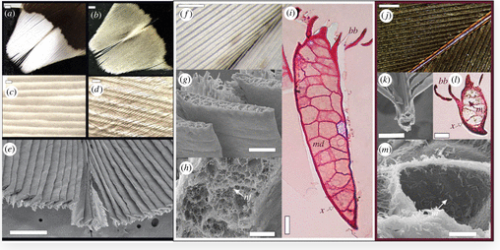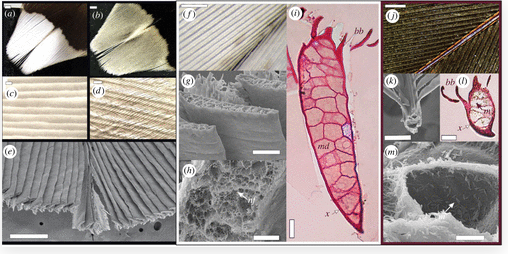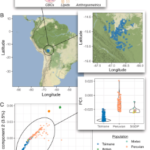主に褐色のキジバトは、その真っ白な尾羽を使って半暗闇の中でコミュニケーションをとり、既知の他のどの鳥よりも30%多く光を反射する。 The mainly brown woodcock uses its bright white tail feathers to communicate in semi-darkness, reflecting 30% more light than any other known bird.
2023-03-01 インペリアル・カレッジ・ロンドン(ICL)
この白い羽根は、光を最大限反射するように構造化されており、鳥が夜間や薄明かりの中で最も活発になる際に、非常に暗い環境で光を集める必要がある。
この発見は、鳥が照明の少ない環境でどのようにコミュニケーションするかについて学ぶ必要があることを示唆している。
<関連情報>
- https://www.imperial.ac.uk/news/243434/woodcocks-have-brightest-white-feathers-ever/
- https://royalsocietypublishing.org/doi/10.1098/rsif.2022.0920
キジバトが鳥類の中で最も鮮やかな白い羽毛の斑を作る仕組み How woodcocks produce the most brilliant white plumage patches among the birds
Jamie Dunning,Anvay Patil,Liliana D’Alba,Alexander L. Bond,Gerben Debruyn,Ali Dhinojwala,Matthew Shawkey and Lukas Jenni
Royal Society Interface Published:01 March 2023
DOI:https://doi.org/10.1098/rsif.2022.0920

Abstract
Until recently, and when compared with diurnal birds that use contrasting plumage patches and complex feather structures to convey visual information, communication in nocturnal and crepuscular species was considered to follow acoustic and chemical channels. However, many birds that are active in low-light environments have evolved intensely white plumage patches within otherwise inconspicuous plumages. We used spectrophotometry, electron microscopy, and optical modelling to explain the mechanisms producing bright white tail feather tips of the Eurasian woodcock Scolopax rusticola. Their diffuse reflectance was approximately 30% higher than any previously measured feather. This intense reflectance is the result of incoherent light scattering from a disordered nanostructure composed of keratin and air within the barb rami. In addition, the flattening, thickening and arrangement of those barbs create a Venetian-blind-like macrostructure that enhances the surface area for light reflection. We suggest that the woodcocks have evolved these bright white feather patches for long-range visual communication in dimly lit environments.



